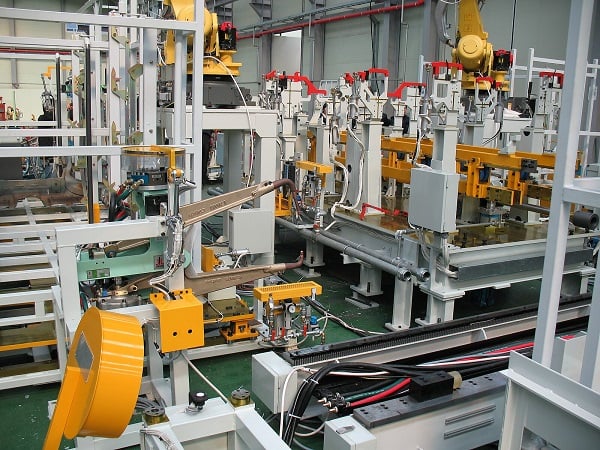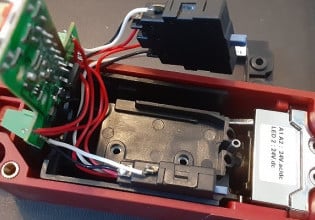Industrial Computing Tackles the Challenge of Long Rebooting Time
Rebooting industrial controllers and computers incurs costs, not only from the downtime but also from cascading effects of communication with up/downstream controllers. How can this downtime be managed?
When this author first started working as a programmer for a defense contractor in the late 1990s, most of his coworkers started the day the same way. They would turn on the power to their desktop computer…and then they’d go get their first cup of coffee of the day. To the modern observer (someone who has grown up or grown accustomed to current computer tech), this may sound like a waste of time, but it was actually quite efficient. Everyone knew computers took several minutes to boot up, so it was better to get your coffee during that unavoidable downtime.
Today, a 30-second smartphone reboot is a major inconvenience. Computers and other personal electronic devices should boot as quickly as possible. But even when they don’t, it’s usually no more than a minor annoyance, at worst.
Industrial hardware, such as industrial PCs, PLCs, data acquisition hardware, data servers, and the like also require rebooting. However, unlike those personal electronics, each second of downtime during a reboot can be measured in dollars.
How can a plant manager minimize this downtime during rebooting?
Hardware Upgrades
One tempting idea is to constantly upgrade hardware components for the latest and greatest model. By replacing last year’s controller with this year’s controller, processing time, rebooting time, and the like are reduced. However, before replacing a controller, computer, or other hardware, a full cost-benefit analysis should be performed. How much downtime is required to install the new controller, integrate it with other existing hardware, and potentially train new operators? All of that must be factored into the cost of replacement.
Fortunately, there are smaller upgrades that can improve performance with a smaller price tag and less time to upgrade.
Solid State Drives
One of the biggest time sinks during regular operation and rebooting is accessing data from the hard drive. Spinning magnetic disks take significantly more time to access than solid state drives (SSDs). Standard drives require the motion of a read head, which must be accurately positioned over the spinning disk. The disk must spin up every time data is accessed. All of this takes precious time.

Figure 1. Substituting disk hard drives for solid-state drives can be a quick optimization for speed, but it can be time-consuming to make the swap for each controller. Image used courtesy of Adobe Stock
While most devices today are shipped with SSDs, devices that do not include one can be quickly and affordably upgraded. The performance will drastically increase with an SSD over a magnetic disk drive.
Memory
Like the hard drive, random access memory (RAM), or simply memory, is also a source of slowdowns during rebooting. By upgrading the amount of memory, the rebooting cycle time can be reduced.
Unfortunately, this upgrade only helps to a degree. While the installation is painless and the cost low, engineers should check with the manufacturer for the best options for upgrading the memory. Each device will have a limited number of slots for memory strips, and those strips may only be able to handle a certain amount of memory, regardless of what new memory strips are developed in the future. In other words, a current motherboard might have two slots, each of which can handle a maximum of 16 GB of memory for a total of 32 GB. Buying a single 32 GB strip will not work.
Manufacturer Innovations
As technology becomes more capable, OEMs can design features into controllers that will decrease power cycle times. One such innovation is the ability to retain power in critical, time-sensitive modules while the main processor accomplishes the power cycling. This bears resemblance to RTC (clock) modules from standard PCs, but instead of only being limited to clock functions, limited battery power can be retained for I/O registers, retentive flags, etc, to reduce re-start time when power is resumed.
Software Upgrades and Configuration
Besides hardware upgrades, there are software upgrades and configuration settings that can be used to speed up rebooting time.
Software Update Scheduling
Modern operating systems are constantly being updated and upgraded, and their installation often requires a system reboot. As new cyber threats are developed, software patches are required to keep hackers from exploiting the weaknesses in the code. For security’s sake, these patches must be installed as soon as possible. However, plenty of other software upgrades can be dismissed until there is a convenient time to perform them. The engineer must balance this carefully, as putting off updates will simply cause them to accumulate, making the next installation and reboot cycle longer. Delaying the inevitable won’t make it take less time.
Plenty of software updates address more than just cybersecurity threats. Some of them track down memory leaks, unnecessary handshaking between devices or components, error reduction routines, elimination of redundant processes, and other such advantages. Therefore, installing the latest version of the software can help reduce cycle time.

Figure 2. The first in a LONG list of background processes for one PC that is used to program automation equipment. Image used courtesy of Control Automation
Reducing Unnecessary Clutter
Another way to speed up rebooting time is to cut out all of the unnecessary “clutter” during startup. Every software package seems to think it is super important and needs to be a high priority in the startup routine of the computer. Other than basic device control, certain timing and synchronization tools, cybersecurity tools (such as antivirus software), and a few other important processes, most of those other programs in the startup routine can be eliminated.
Large time wasters are programs like “driver finders”, software for virtual meetings, and certain update checkers. Let these open only when they are needed; do not embed them into the startup routine. In fact, this is one of the primary benefits of using IPCs for machine control rather than traditional PCs: industrial computer systems can be kept free of ‘clutter’ software that isn’t entirely relevant to the operation.
Intelligent Scheduling
In the end, rebooting is a necessary evil. Whether it is to clear out the RAM due to memory leaks, a power outage or bump, or due to required software upgrades, there is no way around having to reboot.
One way to combat the issue of reboot cycle time is to determine when it should occur. For example, if a controller needs a reboot, check to see when the next preventative maintenance cycle is occurring where the process equipment will be taken offline anyhow. Perform the lower-priority installations and reboots while technicians maintain the equipment. Better yet, make sure to add controller rebooting to the PM as part of the standard operating procedure.
When designing process equipment, it is often an advantage to use the same controllers for all pieces of equipment. This makes troubleshooting and integration efforts much easier. One disadvantage to this method is when a necessary software upgrade is required. If the updates are done remotely, all of the controllers might receive a reboot at the same time. Engineers and technicians should be aware of major software upgrades and stagger the reboots to maximize the total uptime of the process. This will involve shifting the workload between identical machines as they perform their rebooting cycles.

Figure 3. Identical equipment controllers should be rebooted in stages, if possible, when software updates are planned. Image used courtesy of Wikipedia Commons
Planning: The Best Way to Increase Efficiency
Rebooting is a pain. There is simply no way around it. However, the sooner engineers and technicians make rebooting part of their PM routines and learn to plan around these mandatory reboots, the more efficiently the plant will run.
Featured image used courtesy of Adobe Stock






